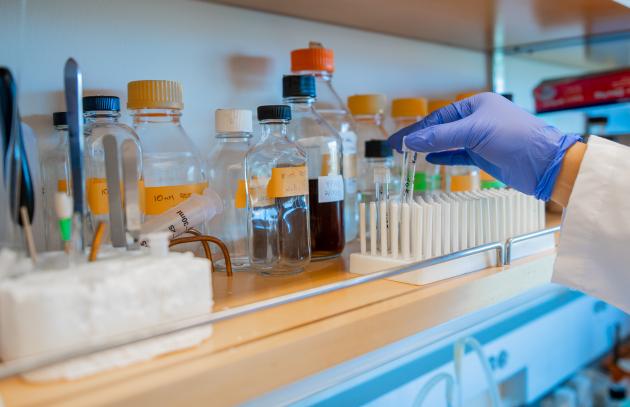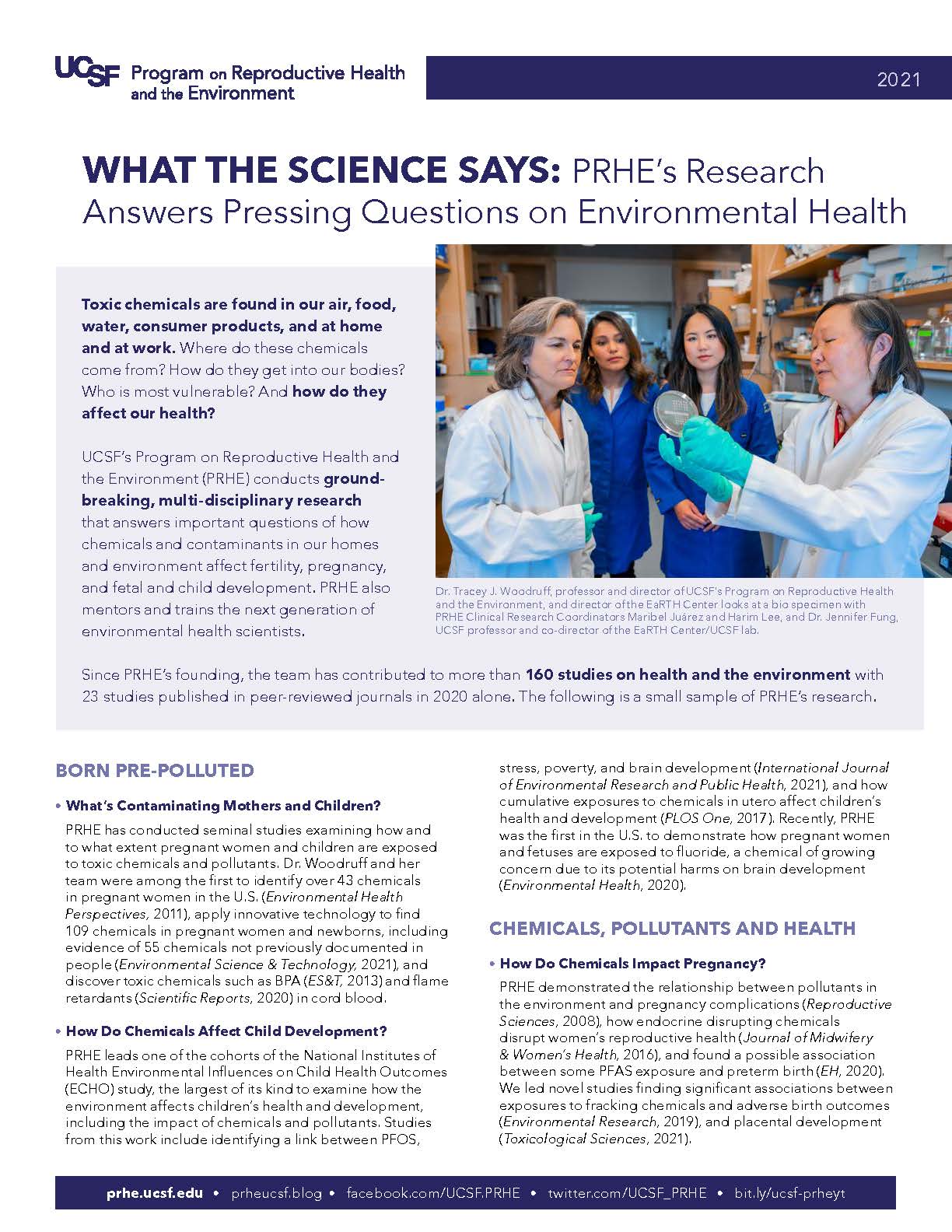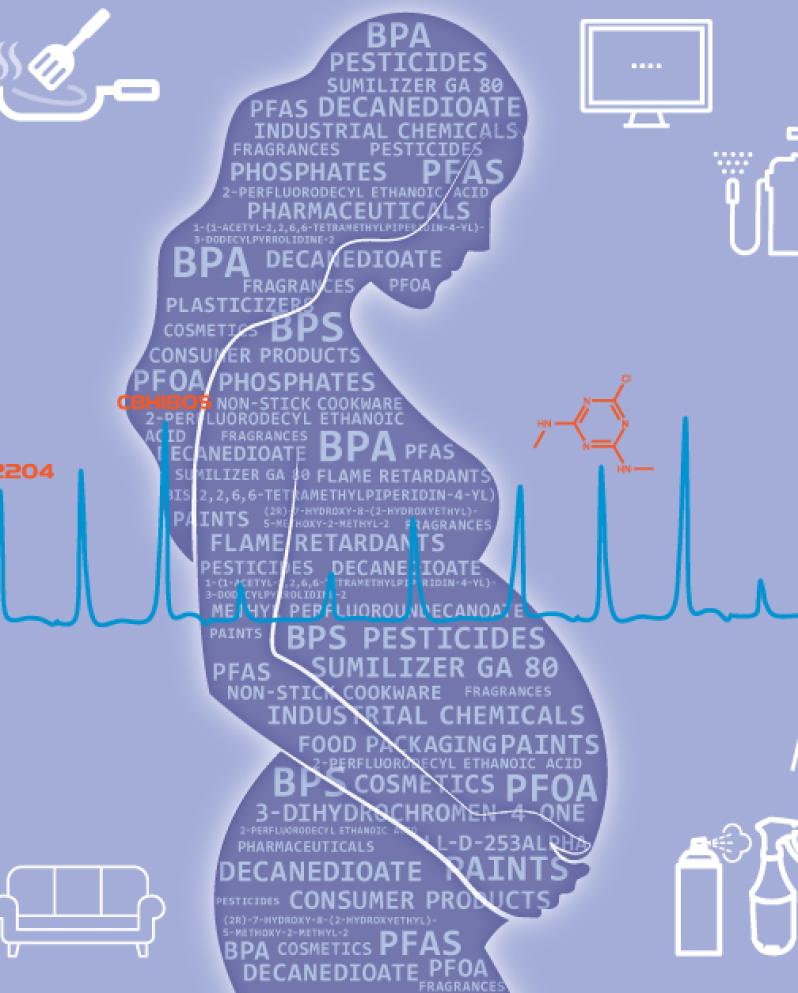Investigating environmental links to disease
Our ground-breaking, multidisciplinary research answers important questions on how chemicals and contaminants in our homes and environment affect fertility, pregnancy, fetal and child development, and health equity. We prioritize filling gaps in knowledge that support clinical decision-making and public policy.
We have written or contributed to more than 180 studies on health and the environment with 23 studies published in peer-reviewed journals in 2020 alone.
UCSF Study Finds Evidence of 55 Chemicals Never Before Reported in People
Scientists at UC San Francisco have detected 109 chemicals in a study of pregnant women, including 55 chemicals never before reported in people and 42 “mystery chemicals,” whose sources and uses are unknown. The chemicals most likely come from consumer products or other industrial sources.
The study was published March 17 in Environmental Science & Technology.
Major Research Areas

Chemicals
We study how harmful chemicals put into our air, food, water, homes, products, and workplaces affect pregnancy, child development, and health.

Plastics
Plastics are a petro-chemical product packed with endocrine-disrupting chemicals that can harm pregnancy, birth outcomes, neurodevelopment, and immune systems.

Climate and Wildfires
We examine how climate is impacting women's and children's health and how to protect pregnant people from wildfire smoke.
Key Research Projects

ECHO
The Environmental Influences on Child Health Outcomes (ECHO) is the largest NIH-funded study to date to explore how chemicals and pollutants in our environment impact pregnancy and child development.

DREAM
The Discovering cancer Risks from Environmental contaminants And Maternal/child health (DREAM) project collected data to explore how chemicals put in our air, food, and water increase cancer risk.

ENACT Center
In partnership with Stanford University, the Endometriosis Center for Action, Community Engagement and Training (ENACT) will work to improve endometriosis diagnosis and treatment by exploring the origins and environmental links to this disease.

PRHE conducts groundbreaking, multi-disciplinary research that answers important questions of how chemicals and contaminants in our homes and environment affect fertility, pregnancy, and fetal and child development. PRHE also mentors and trains the next generation of environmental health scientists.
Published Studies
Perfluoroalkyl substances (PFAS) and polybrominated diphenyl ethers (PBDEs) are used in consumer products for their water repellent and flame retardant properties, respectively. However, there is widespread prenatal exposure and concern about their potential harm to the developing fetus. Here, we utilized data from a demographically diverse cohort of women in San Francisco, CA to examine associations between prenatal exposure to PFAS and PBDEs with gestational age and birth weight for gestational age z-scores.
Human cytochrome p450 (CYP) enzyme expression and activity is lower in the fetus as compared to the adult; however, limited quantitative data exists regarding the specific differences in magnitude or the degree of inducibility due to environmental factors.
Prenatal polybrominated diphenyl ether (PBDE) exposures are a public health concern due to their persistence and potential for reproductive and developmental harm. However, we have little information about the extent of fetal exposures during critical developmental periods and the variation in exposures for groups that may be more highly exposed, such as communities of color and lower socioeconomic status (SES).
Pregnant women who experience psychosocial stressors, such as stressful life events, poor neighborhood quality, and financial hardship, are at an increased risk for adverse pregnancy outcomes. Yet, few studies have examined associations between multiple stressors from different sources, which may be helpful to better inform causal pathways leading to adverse birth outcomes.
Recent studies report an association between preterm birth and exposure to unconventional oil and gas wells. There has been limited previous study on exposure to conventional wells, which are common in California. Our objective was to determine whether exposure to well sites was associated with increased odds of spontaneous preterm birth.
Polybrominated diphenyl ether (PBDE) exposures have been associated with adverse pregnancy outcomes. A hypothesized mechanism is via alterations in placental development and function. However, we lack biomarkers that can be used as early indicators of maternal/fetal response to PBDE exposures and/or perturbations in placental development or function.
Non-targeted analysis provides a comprehensive approach to analyze environmental and biological samples for nearly all chemicals present. One of the main shortcomings of current analytical methods and workflows is that they are unable to provide any quantitative information constituting an important obstacle in understanding environmental fate and human exposure.

